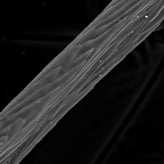
On March 14th, 2012 Gateway Analytical hosted a live webinar titled “Forensic Analysis of Hair and Fibers for Police & Attorneys”. During the webinar our presenter, David Exline, discussed current methods of hair and fiber collection and interpretation and reviewed past and current testing methods with emphasis on the most current methods used for today’s investigators. Below are the questions and answers from the Q&A session at the end of the webinar.
For anyone that missed the webinar, you can watch the replay and download the presentation slides.
Q&A Session with David Exline:
Q: Would it be better, when possible to submit the item itself vs. sampling the fibers/hairs first?
A: Without a doubt it is better to submit the whole item itself vs. sampling. What I would recommend though, is there are certain situations where that’s not the case. For example, if you have a hit and run accident and you have a hair that is stuck in the light of an automobile, you would want to collect that because that is something that could be easily lost in transport. But if you have an item of clothing or garment, then packaging that evidence and submitting it to the laboratory is the appropriate way to do that.
Q: Considering that fiber evidence is used as associative evidence, how can statistics help in a match? How are statistics tools usually used in this field?
A: I’ll give you a great example: like we talked about in hair examinations, statistics are really not a good thing to use. Now when we deal with fibers particularly, they can be of value in very low level and very high. In Europe they do a lot of things with statistical analysis with a thing called Bayesian Statistics. Where they look at the scenario of a crime, they look at the likelihood that someone may have done it, they look at the likelihood that two things would match, the manufacturing information, and based on that they can come up with some statistical interpretation. In the US, if we are sure of what kind of fiber it is, we will have the ability to track the manufacturing and production of that the material originated from, then we can give some statistical value. We did have a case one time, where we had this type of scenario: we knew exactly what kind of shirt the fiber came from. We had the actual garment and by the tags we could tell who the manufacture was. So we could identify how many of these shirts were manufactured, and exactly how many were sent to a specific region, and ultimately down to the employer where the suspect actually worked. So you can provide some statistical relevance to these, but from a broad stroke of being able to give a one in ten million type of statistics like DNA can, hair and fibers analysis is not there yet.
Q: When submitting a known standard to compare with unknowns, what size sample is required for hair and fiber analysis?
A: This varies from agency to agency, but typically the idea for hair examination would be to have 25 to 50 known hairs pulled from the region you are going to compare, and typically we only compare head and pubic hair. That would be an acceptable, because there is variation in a single person’s hair, both public and within in head hair.
For fiber analysis, as long as representative fiber sample is taken, if you have multiple colors in clothing, fabric or carpeting, you want to make sure that the known reference material encompasses the entire representative color and the different fibers that are present in a material. The size for fiber analysis is not as critical as getting a representative sample of the material.
Q: What is a better method for fiber analysis: Raman or FT-IR?
A: Typically the best method for fiber analysis right now is FT-IR. There are more spectral databases that are built for FT-IR, and you don’t have fluorescence issues. However, Raman spectroscopy becomes very important when you are looking at the dye components and also adds a lot of value when you’re talking about a sample that might be micro or nano fibers that are below that 20 micron diameter. With samples that are too small for FT-IR to be performed, Raman spectroscopy does add a lot of value. Currently, there are a lot of Raman data bases that are being built as well. Since there are some pretty good reference databases, so we like to apply both methods and have that secondary method to help us try to identify not just the generic type of fiber, but narrow it down to the specifics as well.
